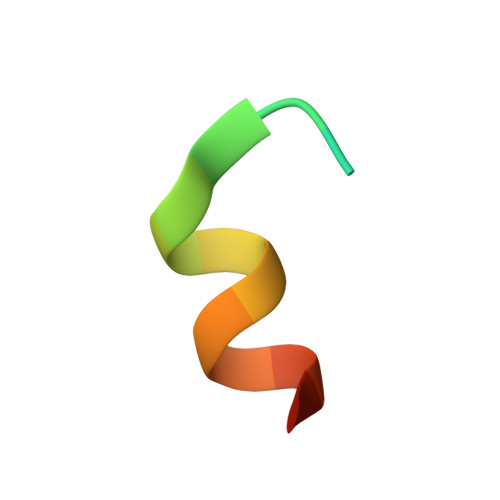The cell cycle regulator GpsB functions as cytosolic adaptor for multiple cell wall enzymes.
Cleverley, R.M., Rutter, Z.J., Rismondo, J., Corona, F., Tsui, H.T., Alatawi, F.A., Daniel, R.A., Halbedel, S., Massidda, O., Winkler, M.E., Lewis, R.J.(2019) Nat Commun 10: 261-261
- PubMed: 30651563
- DOI: https://doi.org/10.1038/s41467-018-08056-2
- Primary Citation of Related Structures:
6GP7, 6GPZ, 6GQA, 6GQN - PubMed Abstract:
Bacterial growth and cell division requires precise spatiotemporal regulation of the synthesis and remodelling of the peptidoglycan layer that surrounds the cytoplasmic membrane. GpsB is a cytosolic protein that affects cell wall synthesis by binding cytoplasmic mini-domains of peptidoglycan synthases to ensure their correct subcellular localisation. Here, we describe critical structural features for the interaction of GpsB with peptidoglycan synthases from three bacterial species (Bacillus subtilis, Listeria monocytogenes and Streptococcus pneumoniae) and suggest their importance for cell wall growth and viability in L. monocytogenes and S. pneumoniae. We use these structural motifs to identify novel partners of GpsB in B. subtilis and extend the members of the GpsB interactome in all three bacterial species. Our results support that GpsB functions as an adaptor protein that mediates the interaction between membrane proteins, scaffolding proteins, signalling proteins and enzymes to generate larger protein complexes at specific sites in a bacterial cell cycle-dependent manner.
Organizational Affiliation:
Institute for Cell and Molecular Biosciences, University of Newcastle, Newcastle upon Tyne, NE2 4HH, UK.
















